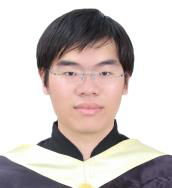Day 1 :
Keynote Forum
Minoru Taya
University of Washington, USA
Keynote: Design of nanorobotics based on flexible Fe Pd nanohelix for cancer treatment
Time : 10:00-10:45

Biography:
Minoru Taya is currently Director, Center for Intelligent Materials and Systems, and also Nabtesco Endowed Chair Professor of Mechanical Engineering in University of Washington. Dr. Minoru Taya obtained his BS in Engineering in 1968 from University of Tokyo, and his MS in 1973 and PhD 1977 in Theoretical Applied Mechanics from Northwestern University. Dr. Taya involved in supervising a number of projects related to multifunctional materials and composites with emphasis on sensing and active materials, and compact actuators Most recently, we is working on (i) FePd nanohelix based nanorobotics under NSF-NRI program where the FePd nanohelix can shrink and expand upon switching on and off magnetic field and (ii) soft-matter based robotic hand technology using dielectric elastomer. Dr. Taya has published over 330 papers, 5 book chapters in the area of intelligent materials and systems and composites and 7 books. In addition, he published the three monograph books.
Abstract:
Recently, we successfully processed the FePd nanorobots (NRs) by using electrochemistry route and post annealing process. The actuation mechanism of the proposed FePd NRs is based on two scientific mechanisms associated with ferromagnetic shape memory alloy Fe70Pd30; (i) hybrid mechanism of chain reaction events; applied magnetic field gradient, magnetic force, stress-induced martensite phase transformation of Fe70Pd30 from stiff austenite to soft martensite, resulting in larger displacement at very high speed that we discovered and (ii) magnetic interactions coupled with stress-induced martensite phase transformation under constant magnetic field, resulting in large displacement. This phase transformation of FePd nanohelix is considered different from that of its bulk sized FePd. It is found that the martensite start temperature(Ms) of the FePd nano-material is shifted toward lower temperature as compared with that Ms of the bulk sized FeP and also the FePd nanohelix NR can exhibits nano-motions under applied constant magnetic field. There are many applications we can apply the above FePd NRs, one of which is a new treatment of cancers by applying mechanical stress loading on live cancers, inducing mechanical stress induced cell death (MSICD) on target cancer cells. We performed a biocompatibility testing on Fe7Pd3 nanoparticles to find that the use of modest amount of the FePd nanoactuators would NOT be cytotoxic to BT-474 breast cancer cells. Here we report some preliminary results of in vitro experiment of MSICD using macroscopic mechanical loading set up which apply mainly dynamic compression loading to live target cells via agarose gel layer. The preliminary results of MSIC indicate that the live breast cancer cells under dominant compressive stress loading area exhibit a mixture of apoptosis and necrosis cell death modes while those under dominant shear stress loading area shows strongly necrosis cell mode
Keynote Forum
Shaker A. Mousa
Executive Vice President and Chairman,Pharmaceutical Research Institute, USA
Keynote: Impact of Nanomedicine on the Future of Medicine: The Road Toward Precision Medicine/Case Studies
Time : 9:30 AM - 10 :00 AM

Biography:
Dr. Mousa finished PhD from Ohio State University, College of Medicine, Columbus, OH and Post-doctoral Fellowship, University of Kentucky, Lexington KY. He also received his MBA from Widener University, Chester, PA. Dr. Mousa is currently an endowed tenure Professor and Executive Vice President and Chairman of the Pharmaceutical Research Institute and Vice Provost for Research at ACPHS. Prior to his academic career, Dr. Mousa was a senior Scientist and fellow at The DuPont Pharmaceutical Company for 17 years where he contributed to the discovery and development of several FDA approved and globally marketed diagnostics and Therapeutics.He holds over 350 US and International Patents discovering novel anti-angiogenesis strategies, antithrombotics, anti-integrins, anti-cancer, and non-invasive diagnostic imaging approaches employing various Nanotechnology platforms. His has published more than 1,000 journal articles, book chapters, published patents, and books as editor and author. He is a member of several NIH study sections, and the editorial board of several high impact Journals. His research has focused on diagnostics and therapeutics of angiogenesis-related disorders, thrombosis, vascular and cardiovascular diseases.
Abstract:
Over the past few years, evidence from the scientific and medical communities has demonstrated that nanobiotechnology and nanomedicine have tremendous potential to profoundly impact numerous aspects of cancer and other disorders in term of early diagnosis and targeted therapy. The utilization of nanotechnology for the development of new nano-carrier systems has the potential to offer improved chemotherapeutic delivery through increased solubility and sustained retention. One of the major advantages of this cutting edge technology is its unique multifunctional characteristics. Targeted delivery of drug incorporated nanoparticles, through conjugation of tumor-specific cell surface markers, such as tumor-specific antibodies or ligands, which can enhance the efficacy of the anticancer drug and reduce the side effects. Additionally, multifunctional characteristics of the nano-carrier system would allow for simultaneous imaging of tumor mass, targeted drug delivery and monitoring (Theranostics). A summary of recent progress in nanotechnology as it relates specifically to nanoparticles and anticancer drug delivery will be reviewed. Nano Nutraceuticals using combination of various natural products provide a great potential in diseases prevention. Additionally, various Nanomedicine approaches for the detection and treatment of various types of organ specific delivery, vascular targeting, and vaccine will be briefly discussed.
Keynote Forum
Haruo Sugi
Department of Physiology, Teikyo University School of Medicine, Tokyo, Japan
Keynote: Myosin head power stroke does not obey predictions based on the swinging lever arm mechanism of muscle contraction
Time : 10:45-11:30

Biography:
Haruo Sugi graduated from post-graduated school in the University of Tokyo with the degree of PhD in 1962, and was appointed to be an Instructor in Physiology, in the University of Tokyo Medical School. From 1965 to 1967, he worked at Columbia University as research associate, and at the National Instututes of Health as a visiting scientist. Sugi was Professor and Chairman in Teikyo University Medical School from 1973 to 2004 when he became Emeritus Professor. He was Chairman of Muscle Commission in the International Union of Physiological Sciences from 1998 to 2008 (IUPS). He organized Symposia on molecular mechanism of muscle contraction six times, each followed by Proceeding published from University of Tokyo Press, Plenum, Kluwer and Springer and regarded as milestones of progress in this area of research work.
Abstract:
Although more than 50 years have passed since the monumental discovery of sliding filament mechanism in muscle contraction, the molecular mechanism of myosin head movement, coupled with ATP hydrolysis, is still a matter for debate and speculation. A most straightforward way to study myosin head movement, producing myofilament sliding, may be to directly record ATP-induced myosin head movement in hydrated, living myosin filaments using the gas environmental chamber (EC) attached to an electron microscope . While the EC has long been used by materials scientists for the in situ observation of chemical reaction of inorganic compounds, we are the only group successfully using the EC to record myosin head movement in living myosin filaments. We position-mark individual myosin heads by attaching gold particles (diameter, 20nm) via three different monoclonal antibodies, attaching to (1) at the distal region of myosin head catalytic domain (CAD), (2) at the myosin head converter domain(COD), and (3) at the myosin head lever arm domain(LD). First, we recoded ATP-induced myosin head movement in the absence of actin filaments, and found that myosin heads moved away from, but not towards, the central bare region of myosin filaments. We also succeeded in recording ATP-induced myosin head power stroke in actin-myosin filament mixture. Since only a limited proportion of myosin heads can be activated by a limited amount of ATP applied, myosin heads only move by stretching adjacent sarcomere structures. As shown in Fig.1, myosin head CAD did not move parallel to the filament axis in the standard ionic strength (B), while it moved parallel to the filament axis (C). These results indicate that myosin head movement does not necessarily obey predictions of the swinging lever arm hypothesis appearing in every text books as an established fact.
 
- Nanomedicine |DNA Nanotechnology |Nanoelectronics and Biomedical Devices |Nano Pharmaceuticals | Cancer Nanotechnology |Polymer Nanotechnology | Nanotoxicity Bio-Nanomaterials and Tissues Engineering | Environment, Health and Safety Issues |Recent developments in Nanotechnology and Nanoscience
Session Introduction
Debabrata Mukhopadhyay
Mayo Clinic College of Medicine and Science, USA
Title: Single-walled carbon nanotubes as sensors of reactive species: Potential therapeutic implications

Biography:
Debabrata Mukhopadhyay is a Professor of Biochemistry and Molecular Biology, Mayo Clinic School of Medicine and Science, Jacksonville, Florida. He has his specific expertise in key research areas including cancer, cardiovascular diseases, neurodegenerative diseases and diabetes. As a Postdoctoral Fellow and later as an Associate Professor at Harvard Medical School, Boston, he carried out angiogenesis and tumor microenvironment related research. He has been serving as a Reviewer for several study sections in NIH, Department of Defense and also international funding agencies and participating as Editorial Board Member for several distinguish journals. Recently, he has been appointed as the Florida Department of Health Cancer Research Chair to develop a new Mayo clinic translational nanomedicine center. He has published more than 198 peer-reviewed manuscripts in different journals including Nature, Nature Medicine, Caner Cell, Cancer Research, Nanoletters and other highly rated journals.
Abstract:
Reactive species, specifically Nitric Oxide (NO) and Hydrogen Peroxide (H2O2) activate signal transduction pathways during angiogenesis and other biological systems and therefore play important roles in physiological development as well as various patho-physiologies. Herein, we utilize a near-infrared fluorescent Single-Walled Carbon Nanotube (SWNT) sensor array to measure the single-molecule efflux of NO and H2O2 from Human Umbilical Vein Endothelial Cells (HUVEC) and cancer cells in response to angiogenic stimulation or chemotherapeutic drugs. The nano-sensor array consists of a SWNT embedded within a collagen matrix that exhibits high selectivity and sensitivity to single molecules of specific reactive species. We observed that the production of H2O2 following VEGF stimulation is elevated outside of HUVEC, but not for stimulation via nano-rods, while increased generation is observed in the cytoplasm for both cases, suggesting two distinct signaling pathways. In addition, we are able to detect the spatial resolution of NO in HUVEC cells in response to VEGF. Moreover, by employing transmission electron microscopy, confocal fluorescent microscopy and UV-Vis spectroscopic analysis, we have confirmed the internalization of DNA-SWCNT in HUVECs. Additionally, by using pharmacological inhibitors as well as genetic approaches, we have found that SWCNT is endocytosed through Rac1-GTPase mediated macro-pinocytosis in normal endothelial cells. Our work reveals a unique mode of entry of SWCNT in cells and might help to properly formulate SWCNT as nano-vectors in biological systems. Moreover, the SWNT platform can be employed for early detection and therapeutic intervention of patients from liquid biopsies, this topic will be discussed as well.
Hoonsung Cho
Chonnam National University, South Korea
Title: Protamine conjugated Fluorochromes: A New Photosensitizer for Photodynamic Tumor Therapy

Biography:
Hoonsung Cho has completed his PhD from University of Cincinnati and postdoctoral studies from Harvard University School of Medicine. Hoonsung Cho is an associate professor of Chonnam National University. The main interest is multifunctional nanocarrier systems for imaging, targeting, and therapy. The current research interests include imaging cell death with multimodal vital fluorochromes and detecting extracellular DNA and RNA using fluorochrome-functionalized nanoparticles as probes for detection and manipulation of these nucleic acids. He is also doing research on the surface treatment of biomaterials using plasma for the improvement of biocompatibility and regeneration.
Abstract:
The Photodynamic therapy (PDT) is a promising alternative therapy that could be used adjunct to chemotherapy and surgery for curing cancer causing tissue destruction by visible light in the presence of a photosensitizer (PS) and oxygen. Protamine is a high arginine peptide with membrane translocating and nuclear localizing properties. The reaction of an NHS-ester of Methylene Blue (MB) and clinical protamine (Pro), to yield MB-Pro, was described in this context and demonstration of phototoxicity which clinical protamine improved PDT effect was performed. The reaction between clinical protamine (Pro) an NHS ester of MB is a solution phase reaction with the complete modification of the protamine peptides which feature a single reactive amine at the N-terminal proline and single carboxyl group at the C-terminal arginine. The aim of this study was to find a new type of photosensitizer (PS) for PDT on in vitro and in vivo experiments and to assess the anti-tumor effect of PDT using the protamine conjugated-PS on the cancer cell line. Photodynamic cell death studies show that the MB-Pro produced has more efficient photodynamic activities than MB alone, causing rapid light induced cell death. The attachment of MB to clinical Pro, yielding MB-Pro, confers the membrane internalizing activity of its high arginine content on Methylene Blue, and can induce a rapid photodynamic cell death, presumably due to cell membrane rupture induced by light. The PDT using MB-Pro for HT-29 cells was very effective and those findings suggest that MB-Pro is one of candidate for photosensitizer in solid tumors.
Francisca Villanueva Flores
National Autonomous University of Mexico, Mexico
Title: Nano-fibers of poly (vinyl alcohol co-vinyl acetate) as novel scaffold for mammalian cell culture and controlled drug delivery

Biography:
Francisca Villanueva Flores is currently pursuing her PhD in Biochemistry from Instituto de Biotecnología in the Universidad Nacional Autónoma de México. Her main research focuses in the development of medical nano devices for neuronal tissue engineering. In her PhD, she has synthetized a nano-implant for restoring cellular function. Her research interests also include the understanding of cell-nanomaterial interactions to develop novel, efficient and safe therapeutic nanobiomaterials.
Abstract:
The development of novel materials as scaffolds for cell culture has gained attention. The current challenge is to provide a scaffold that mimics natural tissues. We have synthetized at physiological temperature a pH-responsive and biocompatible nanostructured hydrogel with three different crosslinking degrees by varying the content of Glutaraldehyde (GA). According to our data of Scanning Electron Microscopy (SEM) and FTIR, we observed that the hydrogel is conformed highly ordered nano-fibers of poly (vinyl alcohol co-vinyl acetate) (nsPAcVA). By Atomic Force Microscopy (AFM), we showed that nsPAcVA has nano-pores homogeneously distributed on its surface. We have characterized the relative amount of remaining hydroxyl groups and of formed acetal bridges by FTIR and by mechanical tests; we have measured the Young’s modulus, strain stress, elastic deformation and tensile strength. nsPAcVA had swelling dynamics dependent on pH and crosslinking. By cyclic voltammetry, we showed that nsPAcVA has ionic conductivity properties inversely proportional to its crosslinking degree. Based on this, we evaluated its capability to controllably release a model molecule. Diffusion analysis through the Peppas equation showed that at lower crosslinking degrees (5 and 10% of GA content), diffusion from nsPAcVA was Fickian. Moreover, we demonstrated for the very first time that nsPAcVA is an efficient scaffold for growth of mammalian cells (embryonic mouse hypothalamic mHypoE-N1 and human lung carcinoma A-549 cells). mHypoE- grown on nsPAcVA had lower proliferation than the control, but after 108 hours of adaptation, cells proliferated at comparable growth levels than the control. No significant difference in A-549 cell growth over nsPAcVA and the control was observed. We present a very easy synthesizable, cheap, biocompatible and nanostructured scaffold for controlled drug release with promising physicochemical characteristics to be applied as a tissue engineering material that integrates abiotic and biotic components towards a new generation of smart implants which ultimately could mimic natural tissues.
Sumit Kumar Gupta
Parishkar College of Global Excellence, Jaipur, India
Title: Study of room-temperature superconductors

Biography:
Sumit Kumar Gupta is the Dean, Faculty of Science at Parishkar College of Global of Excellence Jaipur in the Department of Physics. With over 15 years of teaching, research, and administrative experience, he has held various administrative positions as the Head of Department in various degree colleges and engineering colleges and has a vast experience of teaching in IIT-JEE Institute. He had been associated with Maharishi Arvind Institute of Engineering and Technology, Jaipur for last 8 year as Associate Professor. Prior to that, he was associated with Agarwal PG College, Subodh PG College, Global Institute of Technology, Joythi Vidhyapeeth University Jaipur as faculty positions for 7 years. In his 15 years teaching, administrative and research duration, he has published 24 research papers in highly reputed UGC approved international journals.
Abstract:
Radical developments have recently taken place in the field of superconductors. More specifically, high temperature superconductors have been a focal point and therefore many modifications are being made in the types and varieties of products which employ such devices. In order to better appreciate and understand this field and its implications, it is necessary to attain knowledge of the history and basic principles of superconductivity. With this in mind, the exploration of current applications is ensued in light of recent discoveries. With these topics in focus, it is the goal of this paper to obtain a better understanding and appreciation for research in the field of superconductors. The conclusions drawn are that while much advancement has been made in the field of high temperature superconductors, there is much more room for improvement. The effect seen by such improvements are then widespread throughout medical technologies as well as countless other applications. A room-temperature superconductor is a hypothetical material that would be capable of exhibiting superconductivity at operating temperatures above 0 oC (273.15 K). While this is not strictly room temperature, which would be approximately 20-25 oC, it is the temperature at which ice forms and can be reached and easily maintained in an everyday environment. The highest temperature known superconducting material is highly pressurized hydrogen sulfide, the transition temperature of which is 203 K (−70 oC), the highest accepted superconducting critical temperature as of 2015. By substituting a small part of sulfur with phosphorus and using even higher pressures, it has been predicted that it may be possible to raise the critical temperature to above 0 oC and achieve room-temperature superconductivity. Previously the record was held by the cuprates, which have demonstrated superconductivity at atmospheric pressure at temperatures as high as 138 K (−135 oC), and 164 K (−109 oC) under high pressure, although some researchers doubt whether room-temperature superconductivity is actually achievable. Superconductivity has repeatedly been discovered at temperatures that were previously unexpected or held to be impossible. Claims of near-room temperature transient effects date from the early 1950s and some suggest that in fact the breakthrough might have been made more than once but could not be made stable enough and/or reproducible as the relationship between isotope number and Tc was not known at the time. Finding a room temperature superconductor would have enormous technological importance and, for example, help to solve the world’s energy problems, provide for faster computers, allow for novel memory-storage devices and enable ultra-sensitive sensors, among many other possibilities.
Abdeen Omer
Occupational Health Administration, Ministry of Health and Social Welfare,Khartoum, Sudan
Title: Medicine distribution, regulatory privatisation, social welfare services and its alternatives
Time : 10:30 AM - 11:00 AM

Biography:
Abdeen Mustafa Omer (BSc, MSc, PhD) is an Associate Researcher at Occupational Health Administration, Ministry of Health and Social Welfare, Khartoum, Sudan. He has been listed in the book WHO’S WHO in the World 2005, 2006, 2007 and 2010. He has published over 300 papers in peer-reviewed journals, 200 review articles, 7 books and 150 chapters in books.
Abstract:
The strategy of price liberalisation and privatisation had been implemented in Sudan over the last decade, and has had a positive result on government deficit. The investment law approved recently has good statements and rules on the above strategy in particular to pharmacy regulations. Under the pressure of the new privatisation policy, the government introduced radical changes in the pharmacy regulations. To improve the effectiveness of the public pharmacy, resources should be switched towards areas of need, reducing inequalities and promoting better health conditions. Medicines are financed either through cost sharing or full private. The role of the private services is significant. A review of reform of financing medicines in Sudan is given in this article. Also, it highlights the current drug supply system in the public sector, which is currently responsibility of the Central Medical Supplies Public Corporation (CMS). In Sudan, the researchers did not identify any rigorous evaluations or quantitative studies about the impact of drug regulations on the quality of medicines and how to protect public health against counterfeit or low quality medicines, although it is practically possible. However, the regulations must be continually evaluated to ensure the public health is protected against by marketing high quality medicines rather than commercial interests, and the drug companies are held accountable for their conducts.
Ahmed Mokhtar Ramzy
faculty of agriculture at Cario University, Egypt
Title: E-BABE- Use of Nano-plates for Detection of Pathogenic Bacteria in Water Tubes
Time : 11:00 AM-11:30 AM

Biography:
Ahmed Mokhtar has completed his B.Sc in Biotechnology at the age of 22 years from faculty of agriculture at Cario University as fouth on the honor list of the program and master student at bioinformatics institute suez canal university .He is a Resaerch intern at biomedical lab from Helioplois University. He is the director of BioCourses, a premier Eduactional service organization.
Abstract:
Nanotechnology is an emerging field that covers a wide range of disciplines, including the frontiers of chemistry, materials, medicine, electronics, optics, sensors, information storage,communication, energy conversion, environmental protection, aerospace and more. It focuses on the design, synthesis, characterization and application of materials and devices at the nanoscale Nanomaterials are the foundation of nanotechnology and are anticipated to open new avenues to numerous emerging technological applications. Nanotechnology has grown very fast in the past two decades because of the availability of new approaches and tools for the synthesis, characterization, and manipulation of nanomaterials he purification of drinking water is a primary environmental application of nanotechnology. Contamination and over freshwater resources. Seawater is becoming a recognized source for drinking water, as freshwater becomes significantly scarce. We use the iron oxide nanoplates carried with specific virus that detect the Pathogeneic bacteria (E.COLI) in water tube as a indicator for the pathogenicity of the water tube and as method for chossing the suitable way for water purification.
Rishabh Rastogi
Institute of Science and Technology, Belvaux, Luxembourg
Title: Confined Nanoscale geometries to enhance sensitivity of Plasmonic Immunoassays

Biography:
Rishabh Rastogi is a PhD. Student from Delhi, India. During his studies he worked within different laboratories learning scientific skills and gaining experience in nanofabrication, which made him motivated towards this field. He is working on fabrication of structures that engineered nanoscopically in order to achieve enhancement in electromagnetic waves due to confinement effects. At LIST he is working towards developing plasmonic immunoassays with extreme sensitivity.
Abstract:
Sensitive transduction of bio-molecular binding events on chip carries profound implications to the outcome of a range of biological sensors. This includes biosensors that address both research as well as diagnostic questions of clinical relevance, e.g. profiling of biomarkers, protein expression analysis, drug or toxicity screening and drug-efficacy monitoring. Nanostructured biosensors constitute a promising advance in this direction owing to their ability in catering to better sensitivity, response times, and miniaturization. Plasmonic sensors are particularly interesting among nano-biosensors as they exploit light matter interactions in the nanoscale to transduce bio-recognition events with high sensitivity and miniaturized measurement footprints. Examples of plasmonic sensors include localized surface plasmon resonance spectroscopy (LSPR), surface enhanced Raman spectroscopy (SERS) and metal-enhanced fluorescence (MEF). The performance of the plasmonic sensors critically relies on ability to engineer nanoscale geometric attributes at length scales that typically overlap with the size of small proteins. Such geometries invariably introduce constraints on the molecular binding response, thus altering the interaction outcomes, viz. density and kinetics of adsorption, molecular orientations, in a manner that would impact the resulting optical response. A careful engineering of the nanoscale geometries can simultaneously take advantage of EM field enhancements together with molecular interaction within nanoscale geometries. To this end, this project aims at an engineered nanoscale interface with geometry tailored to simultaneously favour molecular adsorption and plasmonic enhancements for application to plasmonic sensors based on surface-enhanced Raman and Fluorescence spectroscopies.
Marjan Motiei
Royan Institute for Biotechnology, Isfahan, Iran
Title: Amphiphilic Chitosan Nanocarriers, a Novel Platform for Oral Delivery of Hydrophobic Drugs

Biography:
Marjan Motiei has a bachelor in cellular and molecular biology/microbiology at Isfahan University, master of Biochemistry at Payamnoor Tehran University and PhD of Biochemistry at Razi University. Her PhD work had been focused on the fabrication and characterization of amphiphilic chitosan nanocarriers (ACNs) as hydrophobic drug carriers and she is starting a post doc position at Roya Institute and working on co-delivery of small and macro molecule drugs.
Abstract:
Various hydrophobic drugs have problems of reduced stability, water insolubility, low selectivity, and high toxicity. Any good drug carriers will need to play a significant role in resolving these problems. Chitosan due to its ability to be modified and self-assembled into nanoparticles can be used as a drug carrier with wide development potential and has the advantage of slow/controlled drug release, which improves drug solubility and stability, enhances efficacy, and reduces toxicity. However, in certain cases the loss of carrier stability against biological environments induces low bioavailability of encapsulated drugs after oral administration. The objective of this work was to develop and evaluate the performance a novel self-assembled Chitosan nanocarrier for oral delivery. The nanocarrier was prepared through cross-linking approach under acidic condition to enhance oral absorption of a hydrophobic model drug such as Letrozole (LTZ). Amphiphilic chitosan nanocarriers (ACNs) were prepared by oil-in-water emulsion/ionic gelation technique; self-assembled via electrostatic interactions between the negatively charged palmitic acid (PL) and the positively charged chitosan and stabilized by cross linking with sodium tripolyphosphate solution (TPP) under ultrasonication. Firstly, various factors including crosslinking pH, crosslinker concentration, and ratio of core/shell materials were optimized to evaluate the encapsulation efficiency (EE), loading capacity (LC) and release of LTZ. The results showed that EE, LC and release behavior of LTZ were affected significantly by various factors which lead to the optimization of the chitosan nanocarrier. Finally, the drug release behavior of the optimized nanocarriers was evaluated at different pH values of the release medium (3, 6.8 and 7.4) and confirmed that the amount of drug release in the acidic medium was slightly lower than those in the other media. In this presentation, we will discuss the key factors governing the drug delivery performance of the ACNs, the optimized nanocarrier performance and the key factors impacting the drug release behavior under various conditions.
Mohammad Mirjalili
Islamic Azad University, Iran
Title: Preparation and properties of Polymeric nanofiber containing polyamidoamin as wound dressings

Biography:
Mohammad Mirjalili, Vice President of Research and Technology, Islamic Azad University, Yazd Branch, Associate Professor of Textile Engineering & Polymer Department, received his M.Sc. (1998) in textile chemistry. Continued his post graduate studies at the Islamic Azad University, Tehran south branch related to dyeing modification of wool fabric with reactive dyes. Received his Ph. D.(2002) in textile chemistry at Islamic Azad University of Tehran south. He conducted more than 13 Project and 9 doctoral research as well as project related to textile chemistry. He has published more than 30 scientific papers and presented at a number of national and international conferences including 12th International Toki Conference on Plasma Physics and Controlled Nuclear Fusion 2001 in Japan, Word Textile Conference AUTEX2009 in Turkey, Nano Technology Science 2010 in Canada, 11th World Textile Conference AUTEX 2011 in France and 12th World Textile Conference AUTEX 2012 in Croatia. His scientific work is related to Synthesis of Dyes for textile, Industrial wastewater treatment plant, Nano Technology, Natural Dyes, Drug release, Texture engineering and Medical Engineering.
Abstract:
In recent years, healthcare professionals are confronted with patients who suffer and suffer from healing and covering of wounds and burns. During healing, wound dressing protects from wounds and injuries and contributes to the repair and recovery of skin and skin tissues. Due to biocompatibility, biodegradability and their similarity to macromolecules known to man, some natural polymers, including polysaccharides, proteins and peptides, as well as some synthetic polymers such as polyglycolic acid, polylactic acid, polyacrylic acid, polyvinyl Alcohol and. . . It is widely used in the treatment of wounds and burns. In this study, polyvinyl alcohol (PVA) / carboxymethylcellulose (CMC) / polyamidoamine (PAMAM) / tetracycline (Tet) nanofibers was prepared as an electrospinning wound dressing. First, the antibacterial effect of PAMAM on two E. coli and S.Aureus bacteria was investigated and according to the results of PVA / CMC / 15% PAMAM samples were selected as optimal. Then, the release strength of different levels of tetracycline antibiotics (1, 3, 5 and 7% by weight) was investigated to prevent nanofiber-dressed wound infection. The morphology of composite nanofibers was studied with field emission electron microscopy (FESEM). The chemical structure of the nanofibers was studied by infrared spectroscopy (FTIR) and the results of its release profile from all nanofibres were showed that its highest release occurred within the first 12 hours. Fiber membranes containing 1, 3 and 5% by weight of tetracycline have shown drug release for more than 28 days, and for nanofibers containing 7% tetracycline over 14 days. Regarding the results of the release nanofiber wound dressings of the PVA / CMC / 15% PAMAM/ 5% Tet and the surface morphology of this nanofibre, it can be stated that the amount of by weight of Tet is optimal. FTIR spectroscopy results show the successful placement of tetracycline, polyamidoamine in nanofibres.
Hao-Han Pang
Institute of Biomedical Sciences, National Sun Yat-sen University, Taiwan
Title: Epirubicin-loading Fluorescent Qβ Virus-Like Particles Incorporated with CED for Brain Tumor Therapy

Biography:
Hao-Han Pang has his master degree in Institute of Biomedical Sciences, National Sun Yat-sen University, Taiwan, 2017. He is now a Ph.D student in National Sun Yat-sen University. His research interests are virus-like particles applications, RNA interference scaffold design and delivery platform development. The goal of his researches is to develop different applications of virus-like particles such as designed RNA packaging and drug delivery system for cancer therapy.
Abstract:
Glioblastoma multiforme (GBM) is known as the most lethal cancer among all astroglial tumors. The blood-brain barrier (BBB) causes low efficiency in chemotherapy due to difficulty for drugs to cross BBB. Here, we describe an anti-cancer drug, epirubicin (Epi), loaded virus-like nanoparticles (VLPs) carrier system delivering drug and image tracking green fluorescent protein (GFP) simultaneously by convection-enhanced delivery (CED). VLPs are bio-nanomaterials which could be produced via in vivo protein expression and self-assembly in E. coli or other expression system. The VLPs have been described as new generation deliver platform for nucleic acid scaffold, protein, and drug delivery. In this study, we package Epi in self-assembly GFP containing Qβ VLPs (Epi@gVLPs). The Epi@gVLPs were then modified with TAT peptide on the surface to form Epi@t-gVLPs which can enhance the cellular uptake efficiency, resulting in low IC50 (0.05-0.075 μg/mL) for GBM U87 cells as well as free Epi. To prove the anti-tumor ability in animal, the tumor-bearing mice were treated with gVLPs, free Epi, or Epi@t-gVLPs by CED. We found that gVLPs are nontoxic to brain tissue. Conversely, the brain tissues will be corroded soon cause animal death when free Epi was directly injected in brain tumor. Interestingly, the brain tissues did not only damaged, but the tumor growth was inhibited as well when the tumor-bearing mice were treated with Epi@t-gVLPs by CED. The medium survival rate was prolonged to 42 days (single dose of Epi@t-gVLPs) comparted to control group (27 days), and it was further prolonged to over 50 days after the mice received two doses of Epi@t-gVLPs. The results represented that Epi@t-gVLPs could be an advantageous delivering tool for slow toxic drugs release in company with CED to significantly enhance the tumor inhibition and toxicity reduction.
Juan Huang
Southeast University, China
Title: A novel solid self-emulsifying delivery system (SEDS) for the encapsulation of linseed oil and quercetin: Preparation and evaluation

Biography:
Juan Huang has her expertise in research of micro and nano carriers in the field of health. She has a rich experience in the research and application of lipid based delivery systems. Functional lipid nanoparticles have successfully improved the stability, water dispersibility and bioavailability of lipophilic ingredients. Her field of research also contains other lipid based delivery system, for example, nano-emulsions, multilayer emulsions, self-emulsifying carriers and microgels. These researches are expected to address the use of functional ingredients in pharmaceuticals, food and skin care products.
Abstract:
The aim of current research was to develop a solid self-emulsifying delivery system (SEDS) to enhance the delivery of linseed oil and quercetin. The pseudo ternary phase diagram was constructed to optimize the suitable liquid formulation. Liquid absorption on solid absorbent carrier was used to convert liquid into solid self-emulsifying lipid formulation by simple physical mixture. The solid carrier of Aerosil 300 showed highest adsorption capacity. Besides, the solid SEDS prepared with liquid formulation / Aerosil 300 ratio of 2:1 had good flow properties. FTIR indicated that linseed oil and quercetin were encapsulated in Aerosil 300. XRD study suggested that the crystalline structure of quercetin transformed to molecularly dissolved state in solid SEDS. In vitro digestion and release experiments showed that after solid adsorption, linseed oil and quercetin exhibited delayed release patterns. The accelerated oxidation study revealed that non aqueous system was more beneficial to the storage of linseed oil, and Aerosil 300 had no effect on the oxidation stability of linseed oil. Hence, solid SEDS is an attractive candidate for the encapsulation of functional oil and flavonoids for use in food industry.
Haofei Wang
The University of Queensland, Australia
Title: Tumor-Vasculature-on-a-Chip for studying transport of nanoparticles

Biography:
Haofei Wang has received her Bachelor of Bio-Engineering degree in Tianjin University before joining AIBN. She has joined Dr. Zhao's group and started her PhD program in 2016. Her research area focuses on developing biomimetic microfluidic platforms for studying the transport of nanoparticles and their interaction with targeted cells/tissues. She is interested in designing novel microfluidic devices that have the potential to offer rapid preclinical evaluation of potential nanomaterials for targeted therapeutics.
Abstract:
Nanoparticles’ extravasation and tumor accumulation play critical roles in nanoparticle-based drug delivery, but the underlying mechanism, such as the effects of particle size, stiffness and targeting ligands, remains largely unexplored due to the lack of reliable tumor models. Here we report a microfluidic Tumor-Vasculature-on-a-Chip (TVOC) mimicking the tumor microenvironment, mainly the tumor leaky vasculature and tumor tissue, to study the transport of nanoparticles. By culturing endothelial cells and tumor cells in independent channels, TVOC recreates the endothelial barrier and dense tumor ECM, which are the two main biological barriers involved in the extravasation and tissue penetration of nanoparticles. With the use of real-time imaging, the transports of nanoparticles across individual modeled barriers were systematically investigated and different transport kinetics was observed. The results suggested the similar barrier properties of engineered tumor vasculature and dense ECM in hindering the delivery of nanoparticles. The tumor accumulation of nanoparticles was evaluated using tumor spheroids and the results were comparable to results obtained in animal models, which quantitatively validated the TVOC in predicting the performance of nanoparticles in vivo. We show that the TVOC could be used as a powerful platform to evaluate the transport of various nanoparticles at specifically-tuned biological conditions in vitro, which could provide valuable information on future design of nanoparticle-based drug delivery systems with no use of detailed animal experiments.

Biography:
Mohammad Mirjalili, Vice President of Research and Technology, Islamic Azad University, Yazd Branch, Associate Professor of Textile Engineering & Polymer Department, received his M.Sc. (1998) in textile chemistry. Continued his post graduate studies at the Islamic Azad University, Tehran south branch related to dyeing modification of wool fabric with reactive dyes. Received his Ph. D.(2002) in textile chemistry at Islamic Azad University of Tehran south. He conducted more than 13 Project and 9 doctoral research as well as project related to textile chemistry. He has published more than 30 scientific papers and presented at a number of national and international conferences including 12th International Toki Conference on Plasma Physics and Controlled Nuclear Fusion 2001 in Japan, Word Textile Conference AUTEX2009 in Turkey, Nano Technology Science 2010 in Canada, 11th World Textile Conference AUTEX 2011 in France and 12th World Textile Conference AUTEX 2012 in Croatia. His scientific work is related to Synthesis of Dyes for textile, Industrial wastewater treatment plant, Nano Technology, Natural Dyes, Drug release, Texture engineering and Medical Engineering.
Abstract:
The objective of this work was to fabricate electrospun hybrid nanofibers based on cellulose acetate (CA) and poly (vinyl alcohol) (PVA) containing tetracycline hydrochloride (TC) and phenytoin sodium (PHT-Na), respectively. The performance evaluation of the samples was investigated in terms of morphology, drug release, cell cytotoxicity, adhesion, antibacterial property, as well as wettability. The results showed that the CA/PVA hybrid nanofibers have a uniform shape and a narrow diameter distribution (160–180 nm). The release trend of TC from CA significantly decreased in hybrid nanofibers owing to the gelation of PVA in an aqueous solution, and the release mechanism followed the Higuchi model. Besides the improvement in cell growth and the viability of CA/PVA hybrid samples, their antibacterial activity against E. coli and S. aureus stood at ~89% and ~98%, respectively. Furthermore, the obtained result from water contact angle showed a good hydrophilic property for the samples with value of 45° which made them promising materials used in biomedical applications potentially.
Francisca Villanueva Flores
National Autonomous University of Mexico, Mexico
Title: Nano-fibers of poly (vinyl alcohol co-vinyl acetate) as novel scaffold for mammalian cell culture and controlled drug delivery

Biography:
Francisca Villanueva Flores is currently pursuing her PhD in Biochemistry from Instituto de BiotecnologÃa in the Universidad Nacional Autónoma de México. Her main research focuses in the development of medical nano devices for neuronal tissue engineering. In her PhD, she has synthetized a nano-implant for restoring cellular function. Her research interests also include the understanding of cell-nanomaterial interactions to develop novel, efficient and safe therapeutic nanobiomaterials.
Abstract:
The development of novel materials as scaffolds for cell culture has gained attention. The current challenge is to provide a scaffold that mimics natural tissues. We have synthetized at physiological temperature a pH-responsive and biocompatible nanostructured hydrogel with three different crosslinking degrees by varying the content of Glutaraldehyde (GA). According to our data of Scanning Electron Microscopy (SEM) and FTIR, we observed that the hydrogel is conformed highly ordered nano-fibers of poly (vinyl alcohol co-vinyl acetate) (nsPAcVA). By Atomic Force Microscopy (AFM), we showed that nsPAcVA has nano-pores homogeneously distributed on its surface. We have characterized the relative amount of remaining hydroxyl groups and of formed acetal bridges by FTIR and by mechanical tests; we have measured the Young’s modulus, strain stress, elastic deformation and tensile strength. nsPAcVA had swelling dynamics dependent on pH and crosslinking. By cyclic voltammetry, we showed that nsPAcVA has ionic conductivity properties inversely proportional to its crosslinking degree. Based on this, we evaluated its capability to controllably release a model molecule. Diffusion analysis through the Peppas equation showed that at lower crosslinking degrees (5 and 10% of GA content), diffusion from nsPAcVA was Fickian. Moreover, we demonstrated for the very first time that nsPAcVA is an efficient scaffold for growth of mammalian cells (embryonic mouse hypothalamic mHypoE-N1 and human lung carcinoma A-549 cells). mHypoE- grown on nsPAcVA had lower proliferation than the control, but after 108 hours of adaptation, cells proliferated at comparable growth levels than the control. No significant difference in A-549 cell growth over nsPAcVA and the control was observed. We present a very easy synthesizable, cheap, biocompatible and nanostructured scaffold for controlled drug release with promising physicochemical characteristics to be applied as a tissue engineering material that integrates abiotic and biotic components towards a new generation of smart implants which ultimately could mimic natural tissues.
Francisca Villanueva Flores
National Autonomous University of Mexico, Mexico
Title: Nano-fibers of poly (vinyl alcohol co-vinyl acetate) as novel scaffold for mammalian cell culture and controlled drug delivery

Biography:
Francisca Villanueva Flores is currently pursuing her PhD in Biochemistry from Instituto de Biotecnología in the Universidad Nacional Autónoma de México. Her main research focuses in the development of medical nano devices for neuronal tissue engineering. In her PhD, she has synthetized a nano-implant for restoring cellular function. Her research interests also include the understanding of cell-nanomaterial interactions to develop novel, efficient and safe therapeutic nanobiomaterials.
Abstract:
The development of novel materials as scaffolds for cell culture has gained attention. The current challenge is to provide a scaffold that mimics natural tissues. We have synthetized at physiological temperature a pH-responsive and biocompatible nanostructured hydrogel with three different crosslinking degrees by varying the content of Glutaraldehyde (GA). According to our data of Scanning Electron Microscopy (SEM) and FTIR, we observed that the hydrogel is conformed highly ordered nano-fibers of poly (vinyl alcohol co-vinyl acetate) (nsPAcVA). By Atomic Force Microscopy (AFM), we showed that nsPAcVA has nano-pores homogeneously distributed on its surface. We have characterized the relative amount of remaining hydroxyl groups and of formed acetal bridges by FTIR and by mechanical tests; we have measured the Young’s modulus, strain stress, elastic deformation and tensile strength. nsPAcVA had swelling dynamics dependent on pH and crosslinking. By cyclic voltammetry, we showed that nsPAcVA has ionic conductivity properties inversely proportional to its crosslinking degree. Based on this, we evaluated its capability to controllably release a model molecule. Diffusion analysis through the Peppas equation showed that at lower crosslinking degrees (5 and 10% of GA content), diffusion from nsPAcVA was Fickian. Moreover, we demonstrated for the very first time that nsPAcVA is an efficient scaffold for growth of mammalian cells (embryonic mouse hypothalamic mHypoE-N1 and human lung carcinoma A-549 cells). mHypoE- grown on nsPAcVA had lower proliferation than the control, but after 108 hours of adaptation, cells proliferated at comparable growth levels than the control. No significant difference in A-549 cell growth over nsPAcVA and the control was observed. We present a very easy synthesizable, cheap, biocompatible and nanostructured scaffold for controlled drug release with promising physicochemical characteristics to be applied as a tissue engineering material that integrates abiotic and biotic components towards a new generation of smart implants which ultimately could mimic natural tissues.
Minoru Taya
University of Washington, USA
Title: Design of nanorobotics based on flexible Fe Pd nanohelix for cancer treatment

Biography:
Minoru Taya is currently Director, Center for Intelligent Materials and Systems, and also Nabtesco Endowed Chair Professor of Mechanical Engineering in University of Washington. Dr. Minoru Taya obtained his BS in Engineering in 1968 from University of Tokyo, and his MS in 1973 and PhD 1977 in Theoretical Applied Mechanics from Northwestern University. Dr. Taya involved in supervising a number of projects related to multifunctional materials and composites with emphasis on sensing and active materials, and compact actuators Most recently, we is working on (i) FePd nanohelix based nanorobotics under NSF-NRI program where the FePd nanohelix can shrink and expand upon switching on and off magnetic field and (ii) soft-matter based robotic hand technology using dielectric elastomer. Dr. Taya has published over 330 papers, 5 book chapters in the area of intelligent materials and systems and composites and 7 books. In addition, he published the three monograph books
Abstract:
Recently, we successfully processed the FePd nanorobots (NRs) by using electrochemistry route and post annealing process. The actuation mechanism of the proposed FePd NRs is based on two scientific mechanisms associated with ferromagnetic shape memory alloy Fe70Pd30; (i) hybrid mechanism of chain reaction events; applied magnetic field gradient, magnetic force, stress-induced martensite phase transformation of Fe70Pd30 from stiff austenite to soft martensite, resulting in larger displacement at very high speed that we discovered and (ii) magnetic interactions coupled with stress-induced martensite phase transformation under constant magnetic field, resulting in large displacement. This phase transformation of FePd nanohelix is considered different from that of its bulk sized FePd. It is found that the martensite start temperature(Ms) of the FePd nano-material is shifted toward lower temperature as compared with that Ms of the bulk sized FeP and also the FePd nanohelix NR can exhibits nano-motions under applied constant magnetic field. There are many applications we can apply the above FePd NRs, one of which is a new treatment of cancers by applying mechanical stress loading on live cancers, inducing mechanical stress induced cell death (MSICD) on target cancer cells. We performed a biocompatibility testing on Fe7Pd3 nanoparticles to find that the use of modest amount of the FePd nanoactuators would NOT be cytotoxic to BT-474 breast cancer cells. Here we report some preliminary results of in vitro experiment of MSICD using macroscopic mechanical loading set up which apply mainly dynamic compression loading to live target cells via agarose gel layer. The preliminary results of MSIC indicate that the live breast cancer cells under dominant compressive stress loading area exhibit a mixture of apoptosis and necrosis cell death modes while those under dominant shear stress loading area shows strongly necrosis cell mode
- Nano Biotechnology | Regulatory Aspects towards Approval of Nanomedicine |Nanotechnology in Water Treatment Materials Science and Engineering | Advanced Nanomaterials | Carbon Nanotechnology | Nanomedicine Applications | Nano Particles Nanotechnology Products and Markets | Green Nanotechnology |Graphene and 2D Materials- New Materials for the 21st Century
Session Introduction
Seyedeh Hoda Alavizadeh
Nanotechnology Research Center, School of Pharmacy, Iran
Title: Improving liposomal cisplatin formulation: What we have learned after 4 year studies

Biography:
Seyedeh Hoda Alavizadeh has her expertise in delivery of chemotherapeutics using liposome nanoparticles. Her PhD thesis focused on improving cisplatin nanoliposome properties in the treatment of cancer. She prepared and characterized several nanoliposoml formulations and evaluate their efficacy in murine model of tumors. In the light of her experience in this field, she now initiated new project in which she aimed at using novel method of drug loading to improve the efficacy of the liposomal cisplatin. It would be a promising approach in the future development of nanoliposomal cisplatin formulation.
Abstract:
Statement of the Problem: Cisplatin is a widely used drug in cancer chemotherapy which is associated with dose-limiting side effects. Liposomes, the well-known lipid-based nanoparticles, were extensively explored to improve drug activity and reduce normal tissue toxicities of chemotherapeutics. So far, there are three cisplatin liposomes (CL) in clinical trials. Despite reducing side effects, most formulations show poor anti-tumor activity due to insufficient drug bioavailability at the tumor site. During our research project aimed at improving CL, a number of liposomes were prepared to enhance either cisplatin release or liposome uptake by the tumor cells. Methodology & Theoretical Orientation: Liposomes with lipids of different melting points and fusogenic properties were prepared by lipid film method to optimize the release of drug in vitro and in vivo in C26 mice model. The Anti-HER-2 affibody targeted liposomes were also compared with non-targeted liposomes to assess the efficacy of active targeting in murine breast tumor model. Further, in a murine model of C26, the therapeutic efficacy of thermos-sensitive liposomes with different HSPC/DPPC lipid ratios were evaluated upon various heating protocols. Findings: Results indicated that lipid components greatly affect release pattern of drug from liposomes; the fluid bilayers increased drug release but showed instability in vivo. Active targeting by HER2-affibody liposomes significantly increased cell uptake of liposomes. Also, external heat trigger prolonged the survival of animals by enhancing drug release. Conclusion & Significance: Using targeting ligand on the surface of liposome and optimizing lipid components, are valuable approaches resulting in a significant uptake and release of drug from liposome. However, the issue of optimum drug loading still remain. So, this results encourage us to initiate a new project to achieve the desired intra-liposomal drug concentration with the use of new loading method which would be highly desirable for the future development of promising CL formulation.

Biography:
Monica Thukkaram has completed her M.Sc. in Biomedical Engineering in 2016 from VUB/Ghent University, Belgium. She has obtained a Doctoral (PhD) grant strategic basic research (FWO), competitive grant to facilitate the pursuit of promising research with added economic value and currently pursuing her PhD at Ghent University. Her research interest focus on developing antibacterial surface coating on medical grade titanium substrates.
Abstract:
Bacterial infections associated with titanium implants remain a common problem in the orthopedic field. To overcome this, antibacterial plasma polymer nanocomposites have been studied for years due to their antibacterial potency. Unfortunately, the application of these nanocomposites is often hindered by the fact that they are soft and not mechanically stable. Therefore, a hard plasma polymer layer is crucial that can withstand wear abrasion and at the same time shows antibacterial potency. In this study, a low-pressure plasma-based method was employed for the deposition of hard polymeric nanocomposite coatings containing Ag nanoparticles (AgNPs) on Ti substrates. This method uses a gas aggregation source (GAS) for the formation and deposition of Ag nanoparticles and combines it with plasma enhanced chemical vapor deposition of an amorphous hydrocarbon matrix (a-C:H) that is deposited in a mixture of Ar and n- hexane on substrates placed on a powered RF electrode. The matrix properties can be modified by adapting the applied RF power while the amount of incorporated Ag nanoparticles can be altered by the operational parameters of the GAS. The focus of this study is to deposit an a-C:H matrix containing Ag nanoparticles on Ti substrates and to optimize the working parameters to achieve a mechanically stable coating possessing anti-bacterial properties. Three different types of nanocomposite layers are studied: 1) nanocomposite films by simultaneous deposition of AgNPs and an a-C:H matrix 2) sandwich structures with base and top layers of a-C:H and an AgNP interlayer 3) quasi sandwich films with a base layer of a-C:H and a second layer of simultaneous deposition of AgNPs and an a-C:H matrix.UV-Vis spectroscopy was employed to characterize the Ag nanoparticle deposition efficiency at different operational parameters of the GAS. The morphology and chemical composition of different nanocomposite films were studied with SEM-EDS and XPS. Additionally, the antibacterial performance and the Ag ion release rate of the differently prepared samples were investigated. In this way, optimization of the coating deposition process resulting into hard coatings with a prolonged antibacterial efficiency will be achieved.
Shrikrishna P Yawale
Dept. of Physics, Institute of Science, Mumbai, INDIA
Title: Exploitation of conducting polymers as bio-medical sensor

Biography:
Dr. Shrikrishna P Yawale is expertise in the field of gas sensors especially he has carried out work on conducting polymers as gas sensors. He did his PhD from Amravati University, Amravati in 1992. His subject specializations are semiconducting glasses, conducting polymers, gas sensors and instrumentation. He has published more than 150 research papers in national and international journals. One book on Advanced Digital electronics, microprocessor and 8051 microcontroller is published. Under his supervision 21 students have been awarded by PhD in semiconducting glasses, conducting polymers, gas sensors and electronics. He has successfully completed two minor and one major research projects. He worked on various academic committees of Sant Gadge Baba Amravati University, Amravati. He has been felicitated by prestigious award of Best Teacher of Sant Gadge Baba Amravati University. Presently he is working as Professor of Physics at Institute of Science, Mumbai.
Abstract:
Nowadays various types of sensors are available in the market. Early days the inorganic compounds like SnO2, TiO2 etc were used as gas sensors. SnO2 is the prominent one and versatile metal oxide wieldy used as sensor. Now the place of metal oxide semiconductors (MOS) is replaced by conducting polymers such as polypyrrole, polyaniline, polythiophene, etc and their derivatives. These are the prominent candidates today for exploitation of sensors because of their inherent properties like easy preparation, ruggedness, long life, high sensitivity, selectivity, stability, cost effective, miniaturation and eco friendliness. Amongst these sensors especially polypyrrole and polyaniline are used on large scale right from kitchen to the scientific devices, including bio-medical appliances. The polyaniline is potentially used for detection of some peculiar diseases like genorrhoea (one of the HIV group) as bio-medical sensor. While using as bio-medical sensor the main principle of working behind this is, that it will acts as both immobilization matrix as well as physicochemical transducer i.e change in chemical signal into electrical signal. Mostly doped polyaniline is used as glucose bio-sensor, DNA, uric acid, cholesterol, pyelonepuritis (Kidney infection), immunosensor. The polypyrrole is equally important because of some special characteristics. The polypyrrole and polyaniline are having potential applications as an immunosensor which finds alternative technique in clinical diagnostics. These polymers are able to detect the interaction between an antibody and an antigen. Gonorrhoea and its related clinical syndromes are the most common bacterial sexually transmitted disease (STD). The polyaniline-Au (PAni gold nanocomposite) is the important material which detects this type of STD. The PAni-Au-ITO electrode can be used as genosensor specifically for STD because of its increased surface area. A review has been made regarding exploitation and utility of conducting polymers and their derivatives for bio-medical sensor application. It is observed that these type of materials especially polyaniline and polypyrrole are most prominent and suitable candidates for preparation of various types of sensors including gas sensors and bio-medical sensors. These sensors are very stable and have more sensitivity than the oxide materials.
Erumalla Venkatanagaraju
Assistant Professor, Department of Life Sciences, Christ University
Title: Development of self assembled nano carriers for colon cancer

Biography:
Dr. Erumalla Venkatanagaraju is currently working as Assistant Professor at the Christ University. He received his Ph.D. on Microbial Therapeutic Enzymes Production from the University of Acharya Nagarjuna. He completed his Masters Biochemistry from the University of Kakatiya. He then worked at the Institute of Nano Science and Technology, served as Post-Doctoral Fellow and Assistant Professor at the Garden City University in Bengaluru. He has authored 23 publications in various reputed journals. His publications reflect his research interests in clinical application of enzymes and soft nano structures. He is also an Editor of the 13 national and international journals. He is serving as a member in Association of Biotechnology and Pharmacy, Indian Pharmaceutical Association and World Society Interdisciplinary Anti-Aging Medicine. He is currently in charge of ongoing scholarly project, a novel approach in exploitation of waste agar generated in microbial and tissue culture laboratory towards production of bioethanol sponsored by Karnataka State Council for Science and Technology (KSCST).
Abstract:
Background: Treatment of cancer with the aid of nanotechnology has been a field of intense research over the past few years. Although advantages of nanocarriers include improved pharmacokinetics, encapsulation of cytotoxic agents and enhanced accumulation of therapeutics in the tumor microenvironment, the scope of improving selectivity through design of ‘target specific’ nanovehicles has been the most sought after avenues of nanomedicine research. Objective: Objective of this current work was to discover novel soft nanostructures with the capability of specifically targeting colorectal cancer. Materials and Methods: Studies have shown that colorectal cancer is the third leading cause of death worldwide. Arginine based peptide nanotubes (soluble) and fibers (gels) have been synthesized by solid phase peptide synthesizer and developed as nanocarriers of small molecular drugs. Results: These soft nanostructures were installed with target specific moieties like gastrin releasing peptides (receptors overexpressed in cell surface of several malignant tissues, particularly in colon cancer). Conclusions: A unique process of co-assembly has been employed to develop these superior nanocarriers. Briefly, Bombesin (7-14) (Q-W-A-V-G-H-L-M) was tagged to amyloid 17-21 Aβ residue (R-L-V-F-F-A-L) and co-assembled with untagged RLVFFAL sequences to generate a novel class of target specific nanotubes. Also, Rhodamine was tagged to these sequences (Rh-L-V-F-F-A-L) to investigate the mechanism of cellular uptake of the nanostructures through confocal microscopy. Similarly, Fmoc based gelators featuring Arginine were developed and then functionalized with Bombesin (7-14) sequences. Drugs like Campothecin, Curcumin and Irinotecan were loaded on to these soft nanostructures. Finally, the cytotoxicity of these soft nanostructures and their efficacy to deliver cargo (drugs) was probed in HT-29 cell lines (overexpressing GRP cell lines).
Minoru Taya
University of Washington, USA
Title: Design of nanorobotics based on flexible FePd nanohelix for cancer treatment
Time : 12:30 PM-1:00 PM

Biography:
Minoru Taya is currently Director, Center for Intelligent Materials and Systems, and also Nabtesco Endowed Chair Professor of Mechanical Engineering in University of Washington. Dr. Minoru Taya obtained his BS in Engineering in 1968 from University of Tokyo, and his MS in 1973 and PhD 1977 in Theoretical Applied Mechanics from Northwestern University. Dr. Taya involved in supervising a number of projects related to multifunctional materials and composites with emphasis on sensing and active materials, and compact actuators Most recently, we is working on (i) FePd nanohelix based nanorobotics under NSF-NRI program where the FePd nanohelix can shrink and expand upon switching on and off magnetic field and (ii) soft-matter based robotic hand technology using dielectric elastomer. Dr. Taya has published over 330 papers, 5 book chapters in the area of intelligent materials and systems and composites and 7 books. In addition, he published the three monograph books.
Abstract:
Recently, we successfully processed the FePd nanorobots (NRs) by using electrochemistry route and post annealing process. The actuation mechanism of the proposed FePd NRs is based on two scientific mechanisms associated with ferromagnetic shape memory alloy Fe70Pd30; (i) hybrid mechanism of chain reaction events; applied magnetic field gradient, magnetic force, stress-induced martensite phase transformation of Fe70Pd30 from stiff austenite to soft martensite, resulting in larger displacement at very high speed that we discovered and (ii) magnetic interactions coupled with stress-induced martensite phase transformation under constant magnetic field, resulting in large displacement. This phase transformation of FePd nanohelix is considered different from that of its bulk sized FePd. It is found that the martensite start temperature(Ms) of the FePd nano-material is shifted toward lower temperature as compared with that Ms of the bulk sized FeP and also the FePd nanohelix NR can exhibits nano-motions under applied constant magnetic field.There are many applications we can apply the above FePd NRs, one of which is a new treatment of cancers by applying mechanical stress loading on live cancers, inducing mechanical stress induced cell death (MSICD) on target cancer cells. We performed a biocompatibility testing on Fe7Pd3 nanoparticles to find that the use of modest amount of the FePd nanoactuators would NOT be cytotoxic to BT-474 breast cancer cells. Here we report some preliminary results of in vitro experiment of MSICD using macroscopic mechanical loading set up which apply mainly dynamic compression loading to live target cells via agarose gel layer. The preliminary results of MSIC indicate that the live breast cancer cells under dominant compressive stress loading area exhibit a mixture of apoptosis and necrosis cell death modes while those under dominant shear stress loading area shows strongly necrosis cell mode

Biography:
Mohammad Mirjalili, Vice President of Research and Technology, Islamic Azad University, Yazd Branch, Associate Professor of Textile Engineering & Polymer Department, received his M.Sc. (1998) in textile chemistry. Continued his post graduate studies at the Islamic Azad University, Tehran south branch related to dyeing modification of wool fabric with reactive dyes. Received his Ph. D.(2002) in textile chemistry at Islamic Azad University of Tehran south. He conducted more than 13 Project and 9 doctoral research as well as project related to textile chemistry. He has published more than 30 scientific papers and presented at a number of national and international conferences including 12th International Toki Conference on Plasma Physics and Controlled Nuclear Fusion 2001 in Japan, Word Textile Conference AUTEX2009 in Turkey, Nano Technology Science 2010 in Canada, 11th World Textile Conference AUTEX 2011 in France and 12th World Textile Conference AUTEX 2012 in Croatia. His scientific work is related to Synthesis of Dyes for textile, Industrial wastewater treatment plant, Nano Technology, Natural Dyes, Drug release, Texture engineering and Medical Engineering
Abstract:
The objective of this work was to fabricate electrospun hybrid nanofibers based on cellulose acetate (CA) and poly (vinyl alcohol) (PVA) containing tetracycline hydrochloride (TC) and phenytoin sodium (PHT-Na), respectively. The performance evaluation of the samples was investigated in terms of morphology, drug release, cell cytotoxicity, adhesion, antibacterial property, as well as wettability. The results showed that the CA/PVA hybrid nanofibers have a uniform shape and a narrow diameter distribution (160–180 nm). The release trend of TC from CA significantly decreased in hybrid nanofibers owing to the gelation of PVA in an aqueous solution, and the release mechanism followed the Higuchi model. Besides the improvement in cell growth and the viability of CA/PVA hybrid samples, their antibacterial activity against E. coli and S. aureus stood at ~89% and ~98%, respectively. Furthermore, the obtained result from water contact angle showed a good hydrophilic property for the samples with value of 45° which made them promising materials used in biomedical applications potentially.
Umesh Manni
University of Liverpool School of Medicine, UK
Title: Golden treatment for blindness: The use of gold nanoparticles as an enhanced-drug delivery system in age-related macular degeneration

Biography:
Umesh Manni is currently pursuing Bachelor’s degree in Medicine at the University of Liverpool, UK. He currently sits on the Liverpool Research Committee as a Treasurer. He has a special interest in opthalmology and nanotechnology.
Abstract:
Background: Age-related Macular Degeneration (AMD) has fast become one of the leading causes of blindness in the developed world. There are number of effective bio-macromolecule therapeutics available to treat patients with AMD but due to their susceptibility to biodegradation these drugs are required to be administered at regular intervals via monthly intravitreal injections. This invasive procedure can be unpleasant for the patient and lead to detrimental side effects. Gold nanoparticle-based drug delivery systems have been emerging as an attractive alternative. Studies have shown that these nanoparticles can be used as drug depots that can control the release of drugs by exposing them to light. Method: Three studies, which used in vitro and in vivo models to test these drug delivery systems, were presented and analyzed. Results: These studies demonstrated successful application of gold nanoparticles, in vivo and in vitro, in releasing multiple biologics for ocular therapeutics using polymer-coated gold nanoparticles (AuNPs) inside an agarose hydrogel as therapeutic depot. Hydrogel infused with gold nanoparticles could, when exposed to light, release pre-loaded therapeutics. Conclusion: Although success was shown using gold nanoparticle delivery systems in vivo and in vitro, human trials must be considered along with longer term studies before these techniques can be implemented. The method can potentially reduce the number of intravitreal injections required.
Madiha Batool
Govenment College University, Pakistan
Title: Biosynthesis of copper nanoparticles by using Aloe barbadensis leaf extracts and study of application in Congo red (Acid red 28) dye removal

Biography:
Madiha Batool has her expertise in nano-metal green synthesis and its application in degradation of azo dyes. She has experimented on five azo dyes and study effect of degradation efficiency of metal nanoparticles.
Abstract:
Development of green nanotechnology is generating interest of researchers toward eco-friendly biosynthesis of nanoparticles. In this study, biosynthesis of stable copper nanoparticles was done using Aloe barbadensis leaf extract. First of all, we prepared leaf extract of Aloe barbadensis in de-ionized water. This extract added to 1 mmol of copper sulfate solution and observed the change in color of the solution from colorless to dark brown colored solution. The present study tracing of an object is a green synthesis of copper nanoparticles by the interaction of leaf extract and copper salt and its dye removal efficiency. Copper-oxide nanoparticles in this study examined the efficient removal of Congo red CR dye. The effects of variables like concentration, time, pH, adsorbent dosage also examined in this present study. This was noted that maximum pH 3, the concentration of nanoparticles 1 mg, maximum time 120 minutes was optimum condition for dye removal. Biosynthesis of nanoparticle put forward a cost-free and environmentally suitable method of nanoparticle synthesis. The characterization of copper oxide nanoparticles like X-ray diffraction and SEM analysis showed that average particle size calculated was 40 nm. The shape of the copper nanoparticles was spherical and cubic and their range of grain was 80-120 nm. EDX of synthesized nanoparticles showed copper 38%. UV spectrophotometer analysis confirms peak of the copper nanoparticles between 200-600 nm.
Abdeen Omer
Ministry of Health and Social Welfare Khartoum, Sudan
Title: Medicine distribution, regulatory privatization, social welfare services and its alternatives

Biography:
Abdeen Mustafa Omer has completed his BSc, MSc, PhD and is an Associate Researcher at Occupational Health Administration, Ministry of Health and Social Welfare, Khartoum, Sudan. He has been listed in the book WHO’S WHO in the World 2005, 2006, 2007 and 2010. He has published over 300 papers in peer-reviewed journals, 200 review articles, 7 books and 150 chapters in books.
Abstract:
The strategy of price liberalization and privatization had been implemented in Sudan over the last decade and has had a positive result on government deficit. The investment law approved recently has good statements and rules on the above strategy in particular to pharmacy regulations. Under the pressure of the new privatization policy, the government introduced radical changes in the pharmacy regulations. To improve the effectiveness of the public pharmacy, resources should be switched towards areas of need, reducing inequalities and promoting better health conditions. Medicines are financed either through cost sharing or full private. The role of the private services is significant. A review of reform of financing medicines in Sudan is given in this article. Also, it highlights the current drug supply system in the public sector, which is currently responsibility of the Central Medical Supplies (CMS) public corporation. In Sudan, the researchers did not identify any rigorous evaluations or quantitative studies about the impact of drug regulations on the quality of medicines and how to protect public health against counterfeit or low quality medicines, although it is practically possible. However, the regulations must be continually evaluated to ensure the public health is protected against by marketing high quality medicines rather than commercial interests and the drug companies are held accountable for their conducts. The study reveals the need for further research to find out how efficient the regulatory authorities at both federal and state levels are. The research also needed to discover whether or not counterfeit medicines are sold on the Sudanese market. From the data obtained in this article some general inferences could be made: (1) Broad outlines remain intact, but preventing drug smuggling across national borders (Sudan shares frontiers with 9 countries) is hard to police. (2) The enforcement of the act and its regulation governing the manufacture, importation, sale, distribution and exportation of medicines are not adequate enough to control the illegal importation and sale of medicines in Sudan. (3) The splitting of the drug regulatory authority between two ministries and the marketing of unregistered medicines by public drug suppliers (namely the CMSPO and RDFs) and NGOs undermine the quality of medicines and ultimately jeopardize the health of the people taking medication.
Ahmed Mokhtar Ramzy
Cairo University, Egypt
Title: Use of nanoplates for detection of pathogenic bacteria in water tubes

Biography:
Ahmed Mokhtar Ramzy has completed his BSc in Biotechnology from Faculty of Agriculture, Cairo University and Masters in Bioinformatics from Suez Canal University. He is a Research Intern at Biomedical lab from Helioplois University.
Abstract:
Nanotechnology is an emerging field that covers a wide range of disciplines, including the frontiers of chemistry, materials, medicine, electronics, optics, sensors, information storage, communication, energy conversion, environmental protection, aerospace and more. It focuses on the design, synthesis, characterization and application of materials and devices at the nanoscale, nanomaterials are the foundation of nanotechnology and are anticipated to open new avenues to numerous emerging technological applications. Nanotechnology has grown very fast in the past two decades because of the availability of new approaches and tools for the synthesis, characterization and manipulation of nanomaterials the purification of drinking water is a primary environmental application of nanotechnology, contamination over freshwater resources. Seawater is becoming a recognized source for drinking water, as freshwater becomes significantly scarce. We use the iron oxide nanoplates carried with specific virus that detect the pathogeneic bacteria (E. coli) in water tube as indicator for the pathogenicity of the water tube and as method for choosing the suitable way for water purification.
Badis Bendjemil
University of Badji Mokhtar, Algeria
Title: Carbon nanotubes in cancer diagnosis and therapy

Biography:
Badis Bendjemil, LASEA, Department of Chemistry, University of Badji-Mokhtar, 23000 Annaba, Algeria; University of 8 Mai 1945 Guelma, 24000 Guelma, Algeria
Abstract:
During the past years, Carbon Nanotubes (CNTs) have attracted considerable interest since their first discovery. Great progress has been made in the field of nanomaterials given their great potential in biomedical applications. Carbon Nanotubes (CNTs), due to their unique physicochemical properties, have become a popular tool in cancer diagnosis and therapy. They are considered one of the most promising nanomaterials with the capability of both detecting the cancerous cells and delivering drugs or small therapeutic molecules to these cells. Because of the unique structure, extremely high specific surface area to-volume ratio enable them to use in an intense real time applications such as detection and treatment of cancerous cells, nervous disorders, tissue repair and excellent electrical and mechanical properties carbon nanotubes composed of excellent mechanical strength, electrical and thermal conductivities makes them suitable substance towards developing medical devices. CNTs have been explored in almost every single cancer treatment modality, including drug delivery with small nanomolecules, lymphatic targeted chemotherapy, thermal therapy, photodynamic therapy and gene therapy and demonstrate a great promise in their use in targeted drug delivery systems, diagnostic techniques and in bio-analytical applications. Majority of the biomedical applications of CNTs must be used after successful functionalization for more potential applications than pristine CNTs. There are several approaches to modify pristine CNTs to potentially active. CNTs poised into the human life and exploited in medical context. Here in, we reviewed the following topics: (1) Functionalization of CNTs; (2) CNTs in real time applications such as drug delivery, gene therapy, biosensors and bio imaging; (3) CNTs 3D printed scaffolds for medicine and (4) biocompatibility and biodegradability. The types of CNTs, properties, methods of synthesis, large scale production method, purification techniques and characterization aspects of carbon nanotubes. In the second part of the review, the functionalization of carbon nanotubes is reviewed in detail, which is not only important to make them biocompatible and stable in biological systems but also render them a great property of loading various biomolecules, diagnostic and therapeutic moieties resulting in diversified applications. In the final part of the review, emphasis is given on the pharmacokinetic aspects of carbon nanotubes including administration routes, absorption mechanisms, distribution and elimination of carbon nanotubes based systems. Lastly, a comprehensive account about the potential biomedical applications has been given followed by insights into the future carbon nanotubes from synthesis to in vivo biomedical applications.
